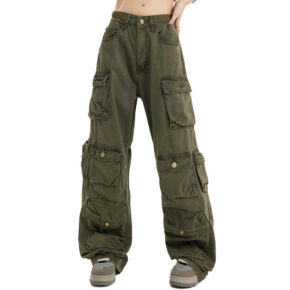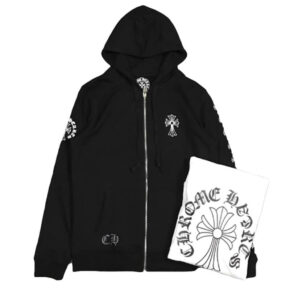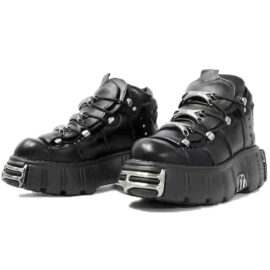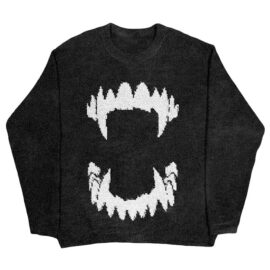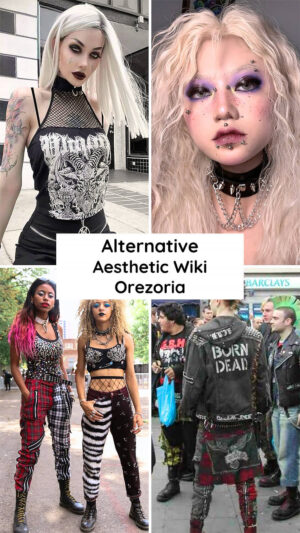
The alternative aesthetic is a style that challenges the norms of mainstream fashion and embraces unique and nonconformist elements. It encompasses various subcultures such as goth, punk, emo, and grunge, which have gained significant relevance in contemporary culture.
The goth subculture emerged in the 1980s and is characterized by its dark and brooding fashion choices, often featuring black clothing, heavy makeup, and accessories like studded belts and platform boots. Punk fashion, on the other hand, is known for its rebellious and edgy vibe, with elements like band t-shirts, leather jackets, and skinny jeans.
Emo aesthetics draw inspiration from punk and goth, often featuring dark and emotional themes. Emo fashion includes elements like raccoon eyeliner, skinny jeans, and band merchandise. Grunge fashion, associated with the 1990s music scene, is marked by its laid-back and disheveled appearance, incorporating flannel lumberjack shirts, ripped jeans, and combat boots.
With their unique styles, these alternative subcultures have created a dedicated following and influenced mainstream fashion trends. The alternative aesthetic represents a departure from conventional fashion, allowing individuals to express their individuality and challenge societal norms.
Related aesthetics: 90s, Tumblr, Acubi, Addamscore, Dark Fashion, Doomer, E-Boy, E-Girl, Edgy, Emo, Fairy Grunge, Goth, Grunge, J-Rock, Mallgoth, Pastel Goth, Punk, Skater, Soft Goth, Soft Grunge, Visual Kei, Witchcore
Full List of Aesthetics
History of Alternative Aesthetic
The alternative aesthetic has a rich history rooted in the emergence and development of various sub styles such as Goth, Punk, Emo, and Grunge. These distinctive fashion movements have shaped the alternative subculture and continue to influence fashion and style today.
The Goth subculture originated in the 1980s, drawing inspiration from bands like Bauhaus and Siouxsie and the Banshees. Goth fashion is characterized by its dark and brooding aesthetic, with individuals often wearing black clothing, heavy makeup, and accessories such as studded belts and platform boots.
Punk fashion emerged in the 1970s as a response to societal unrest and political disillusionment. Known for its rebellious and edgy vibe, punk style features elements like band t-shirts, leather jackets, and skinny jeans. It is closely associated with punk music and the counter-culture movement.
Emo aesthetics evolved from the intersection of Goth and Punk in the 1990s, emphasizing emotional expression and introspection. Emo fashion incorporates raccoon eyeliner, skinny jeans, and band merchandise, reflecting a darker and more emotional aesthetic.
Grunge fashion became popular in the 1990s as a reflection of the alternative music scene, particularly the Seattle grunge movement. It is characterized by a laid-back and disheveled appearance, featuring flannel lumberjack shirts, ripped jeans, and combat boots.
These alternative sub styles emerged and developed during times of social change, counterculture movements, and underground music scenes. Their influence persists in contemporary fashion, as individuals continue to embrace the alternative aesthetic as a way to express their individuality and challenge mainstream norms.
Key Elements of the Alternative Aesthetic
The alternative aesthetic encompasses a wide range of styles and subcultures that deviate from mainstream fashion and societal norms. It is characterized by its rebellious and non-conformist approach, allowing individuals to express themselves authentically and explore different avenues of self-identity.
Key elements of the alternative aesthetic include punk and goth fashion, which have had a significant influence on alternative subcultures. Punk fashion emerged in the 1970s, inspired by the punk music genre and fueled by a sense of rebellion and social discontent. It features elements such as leather jackets, band t-shirts, and skinny jeans, reflecting a raw and edgy aesthetic.
Goth fashion, on the other hand, originated in the 1980s and draws inspiration from bands like Bauhaus and Siouxsie and the Banshees. It embraces a darker and more brooding aesthetic, often incorporating black clothing, heavy makeup, and accessories like studded belts and platform boots.
The alternative aesthetic also encompasses other subcultures such as emo and grunge. Emo fashion emerged in the 1990s, combining elements from goth and punk styles with a focus on emotional expression. It often includes raccoon eyeliner, skinny jeans, and band merchandise.
Grunge fashion gained popularity in the 1990s as a reflection of the alternative music scene, particularly the Seattle grunge movement. It is characterized by a laid-back and disheveled appearance, featuring flannel lumberjack shirts, ripped jeans, and combat boots.
Types of Alternative Sub Styles and Related Aesthetics
The alternative aesthetic is not limited to just punk and goth fashion. It encompasses various subcultures and styles that have emerged over the years, each with its own unique aesthetic and influences. From emo and grunge to pastel goth and soft grunge, the alternative substyles and related aesthetics offer a wide range of options for those looking to express their individuality and non-conformity.
Whether it’s dark and brooding or colorful and whimsical, the alternative aesthetic allows people to explore different aspects of their personality and embrace their own sense of style. Let’s take a closer look at some of the popular types of alternative substyles and their related aesthetics.
Grunge
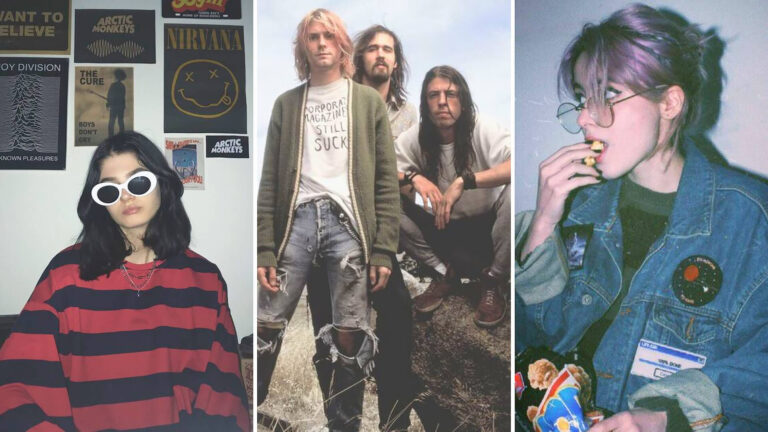
Grunge is a subgenre of alternative rock music that emerged in the late 1980s and gained popularity in the 1990s. Originating from the Pacific Northwest, particularly Seattle, grunge became a counter-cultural movement characterized by its raw, gritty sound and anti-establishment lyrics.
In terms of fashion, grunge style is heavily influenced by the music genre itself. It is known for its disheveled, nonchalant appearance, featuring elements such as torn jeans, oversized flannel shirts, band t-shirts, and combat boots. This aesthetic reflects the rebellious and DIY nature of the grunge subculture.
One of the sub styles that emerged from grunge is soft grunge. Soft grunge originated in 2010 and gained popularity on social media platforms. It is characterized by a more toned-down version of the traditional grunge look, incorporating elements such as pastel colors, floral prints, and vintage-inspired clothing. Typical soft grunge outfits often include high-waisted shorts, crop tops, oversized sweaters, and chunky accessories.
Over time, grunge fashion has evolved and made its mark on the alternative aesthetic. It has influenced various subcultures and contemporary fashion trends, blending with elements from other styles to create a unique and diverse alternative look. Today, grunge-inspired fashion continues to be popular among alternative individuals, as its non-conforming and edgy vibe resonates with the rebellious spirit of the alternative subculture.
Punk
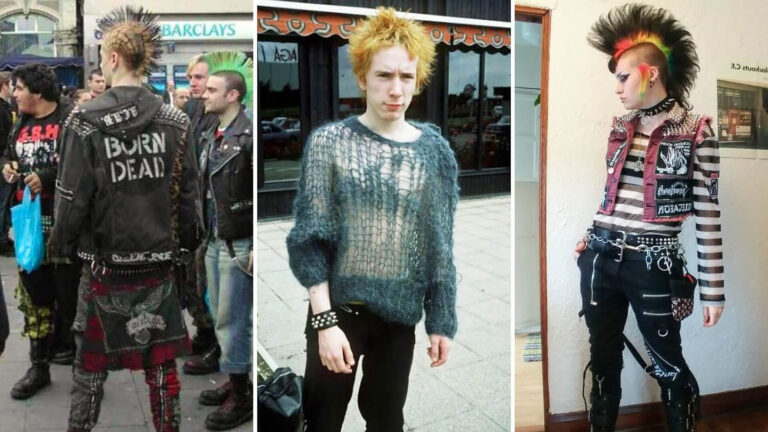
Punk fashion is at the core of the alternative aesthetic, representing a rebellious and anti-establishment subculture that emerged in the 1970s. It is known for its iconic elements and distinctive style that challenges societal norms.
Originating from the punk rock music genre, punk fashion is characterized by its bold, edgy, and DIY attitude. It embodies the values of individuality, non-conformity, and going against the mainstream. Punk fashion is all about expressing oneself through unconventional and often aggressive means.
Key elements of punk fashion include band t-shirts, leather jackets adorned with pins and patches, ripped or distressed clothing, and accessories such as studded belts and spiked wristbands. The hairstyle is an important aspect, with punk individuals often sporting brightly colored or spiked hair. Tattoos and body modifications are also common among punk fashion enthusiasts.
Punk fashion continues to influence alternative fashion today, with its rebellious spirit inspiring various subcultures and DIY fashion movements. It serves as a powerful reminder that personal style can be a form of self-expression and rebellion against societal norms.
Goth
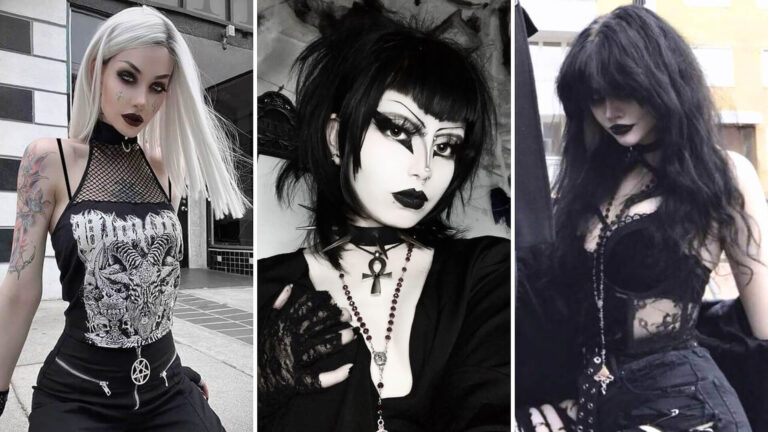
The goth subculture emerged in the late 1970s as a response to the punk movement. While sharing some similarities with punk fashion, goth fashion has a darker and more romantic aesthetic. Goths embrace a somber and macabre style, often wearing all-black clothing and accessorizing with silver jewelry and occult symbols.
Characterized by a combination of Victorian and punk influences, goth fashion has become an iconic and enduring subculture. Goths often display distinctive makeup, with dark eye shadow, heavy eyeliner, and dark lipstick being common choices. This dramatic makeup enhances the gothic look and adds an air of mystery.
In recent years, a sub-trend within goth fashion called nu-goth has gained popularity. Nu goth blends the classic goth elements with modern influences, creating a more minimalistic and casual style. It draws inspiration from diverse sources such as hipster fashion, grunge aesthetics, and Japanese streetwear.
Key elements of nu-goth fashion include long flowy dresses, oversized shirts featuring occult prints, skater skirts, pentagram harnesses, chunky heels, and platform boots. The color palette expands beyond black to include shades of gray, burgundy, and dark purples. Nu goth is characterized by its attention to detail, with an emphasis on layering and texture.
The goth subculture and its various sub-trends continue to evolve and inspire those who embrace its dark and distinctive aesthetic. Whether adhering to traditional goth fashion or exploring the nu goth style, goths make a bold statement that celebrates individuality and embraces their unique sense of style.
Emo
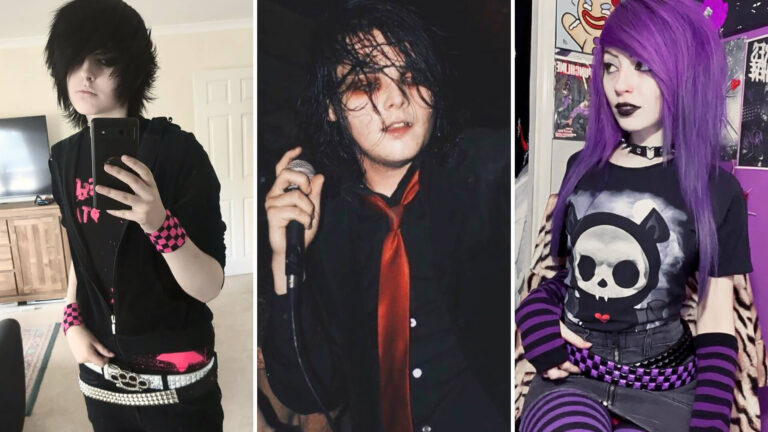
Emo, a substyle closely connected to the goth subculture, gained significant popularity in the mid-2000s. Known for its emotional and introspective nature, emo fashion emerged as a way for individuals to express their inner turmoil and deep emotions through their personal style.
Typical emo outfits consist of elements influenced by punk fashion and goth aesthetics. Skinny jeans, often in black or dark colors, are a staple of the emo wardrobe. Paired with band T-shirts and studded belts, these outfits display a sense of rebellion and individuality.
Emo hairstyles are also an essential component of the substyle. Many emo individuals opt for choppy haircuts, characterized by layers and uneven lengths. Long side-swept bangs are a prominent feature, often dyed in black, platinum blonde, or unconventional colors such as bright red or neon green. These hairstyles serve as a visual representation of the emotional intensity that is inherent in the emo subculture.
Emo fashion and hairstyles allow individuals to express their unique identities and emotions. By combining influences from goth, punk, and alternative culture, the emo substyle remains a significant part of the alternative aesthetic.
Alternative Aesthetic Fashion and Outfits Guide
Alternative aesthetic fashion is a style that embraces non-traditional and unconventional elements, often pulling inspiration from various subcultures such as punk, goth, and emo. It is a form of self-expression that challenges mainstream fashion trends and incorporates unique details to create a distinct aesthetic.
This guide will explore the essential elements of alternative aesthetic fashion and provide inspiration for outfits that showcase individuality, creativity, and a rebellious spirit.
Alternative Clothing
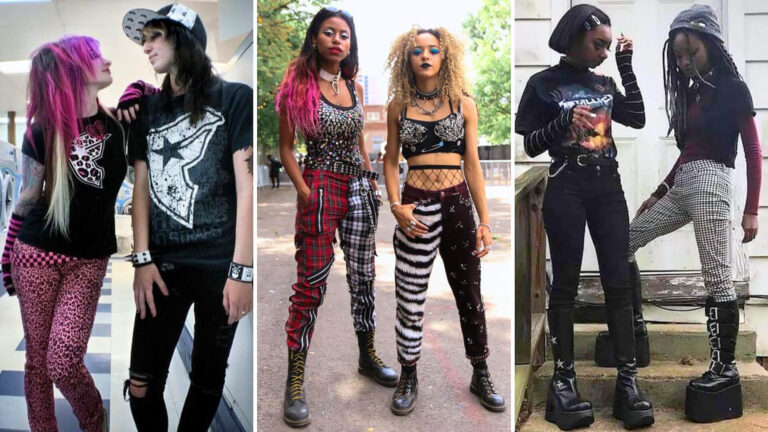
Alternative Clothing encompasses a diverse range of styles and subcultures that challenge the mainstream fashion scene. From punk to goth, emo to cottagecore, the alternative aesthetic embraces individuality and non-conformity. While these subcultures are often associated with specific fashion elements like studded belts and black attire for goths, or band t-shirts and skinny jeans for punks, alternative fashion goes beyond these signature styles.
The beauty of alternative clothing lies in its ability to transcend boundaries and embrace a wide range of unique and non-mainstream aesthetics. It welcomes experimentation and self-expression, allowing individuals to explore their own personal style in ways that may not conform to conventional norms. Whether it’s incorporating pastel colors into goth fashion, mixing grunge elements with cottagecore, or combining various subcultural influences to create an entirely new look, alternative fashion gives people the freedom to break free from the confines of commercial fashion and indulge in their own creative expression.
In essence, alternative clothing encompasses a vibrant and ever-evolving subculture that defies the conventional notions of style. It’s a dynamic movement that celebrates individuality, rebellion, and authenticity, offering a refreshing alternative to the mass-produced fashion of the mainstream. Whatever your aesthetic preferences may be, there’s a place for you within the diverse and inclusive world of alternative fashion.
You can find more Alternative clothing and accessories in our Alternative Outfits Collection.
Try our new Aesthetic Outfits AI to Try-on Clothes.
Alternative Accessories
Alternative accessories play a significant role in enhancing and complementing the alternative aesthetic. These accessories help individuals express their unique style and add depth to their fashion outfits. From choker necklaces to spiked bracelets and fishnet stockings, these accessories contribute to creating a distinctive alternative look.
Choker necklaces are a staple in the alternative fashion scene. They add a touch of edginess and can vary in design, from simple black velvet chokers to more elaborate chains or adorned with pendants. Spiked bracelets, on the other hand, are synonymous with punk and goth subcultures. They bring a rebellious and fierce touch to any outfit.
Fishnet stockings are another must-have accessory for alternative fashion enthusiasts. They can be worn under ripped jeans, skirts, or shorts and add a bold and provocative element to the overall look. Whether styled in a grunge, goth, or punk fashion, fishnet stockings are an essential component.
Other alternative accessories include platform boots, a staple in alternative fashion that adds height and attitude to any outfit. Band patches, whether sewn onto jackets or backpacks, display musical preferences and contribute to a unique and authentic alternative style.
Alternative Makeup
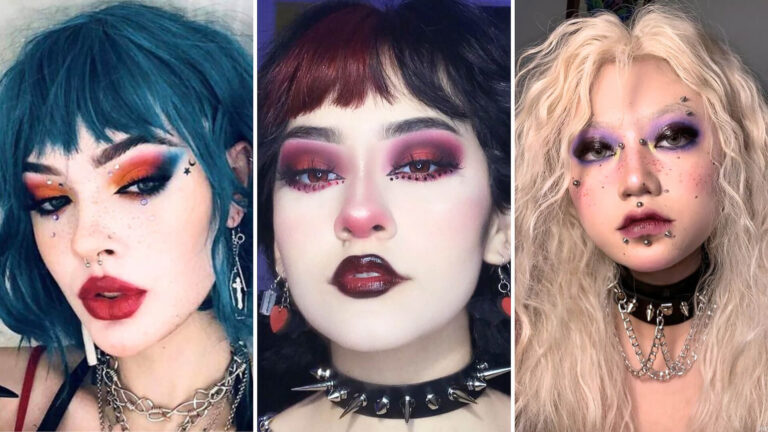
Alternative makeup is an integral part of the alternative aesthetic, allowing individuals to express their unique style and creativity through bold and dramatic looks. It encompasses various techniques and styles that are distinct from conventional or mainstream makeup.
One prominent feature of alternative makeup is the use of dark eyeliner. Thick, smudged lines applied around the eyes create a striking and rebellious look. Colored eyeshadows are also commonly used, with vibrant hues like electric blues, purples, and greens adding a pop of color and intensity to the eyes.
Bold choices in lipstick are another hallmark of alternative makeup. Deep, rich shades like black, burgundy, or deep purple are popular choices, bringing a sense of mystery and allure to the overall look.
Alternative makeup trends often include unique styles such as pastel goth, where soft, pastel colors are combined with gothic elements. Neon accents are another popular trend, with vibrant, eye-catching hues added to the eyes or lips.
In addition to traditional face makeup, alternative makeup may also involve edgy face and body art. This can range from intricate designs painted on the face to the use of temporary tattoos or body paint to create a visually striking statement.
Alternative Hairstyles
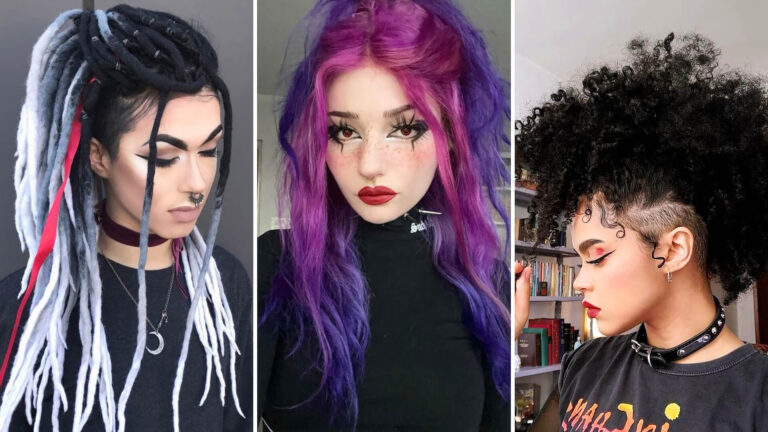
Alternative hairstyles are an essential aspect of the alternative aesthetic, offering individuals the opportunity to express their creativity and rebel against mainstream beauty standards. These hairstyles boast uniqueness and relevance, allowing individuals to stand out and showcase their individuality.
One popular alternative hairstyle is the dreadlock, which involves intentionally matting and knotting the hair to create rope-like strands. Dreadlocks are associated with various subcultures, including the punk and alternative movements, and are often embraced as a symbol of rebellion and nonconformity.
Another distinctive alternative hairstyle is the vibrant colored hair trend, commonly seen in shades like neon pink, electric blue, or vibrant green. These bold hair colors allow individuals to make a bold and unapologetic statement, challenging conventional beauty norms and celebrating individuality.
The shaved head is another alternative hairstyle that defies mainstream beauty standards. This edgy look can be adorned with intricate designs, adding an extra layer of creativity and personal expression.
Braided hairstyles, such as cornrows or box braids, are also popular within the alternative aesthetic. These styles not only offer versatility and a wide range of creative possibilities but also pay homage to cultural traditions while blending with alternative fashion.
Alternative Nails and Nail Art
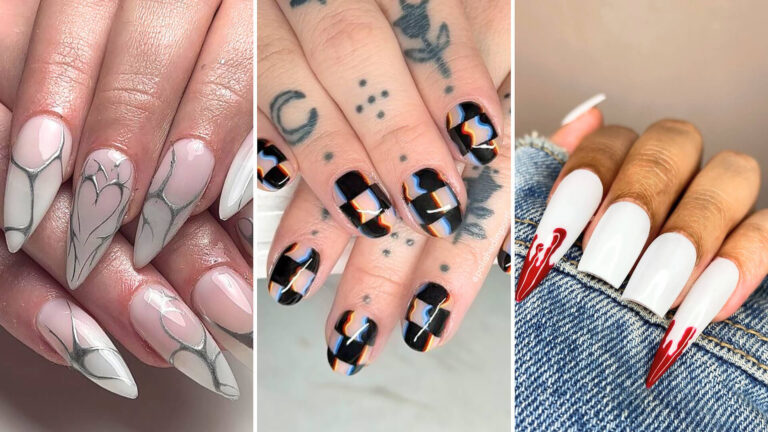
Alternative nail art is a popular way for individuals to express their unique style within the alternative aesthetic. One notable aspect of alternative nails is the use of bold and vibrant colors. Instead of sticking to traditional neutral shades, alternative nail art embraces eye-catching hues like neon pink, electric blue, or vibrant green. These bold colors add an edgy and rebellious touch to the overall look.
In addition to bold colors, alternative nail art often incorporates geometric patterns. These patterns can range from simple lines and shapes to more intricate designs inspired by art movements like abstract or op art. Geometric patterns on nails contribute to a modern and avant-garde aesthetic, showcasing an individual’s creativity and love for unconventional beauty.
Another characteristic of alternative nail art is the use of unique textures. Nails can be adorned with various textures like matte, glossy, glitter, or even textured polishes that resemble leather or animal prints. These textured finishes add depth and visual interest to the nails, creating a truly alternative and captivating look.
Some popular designs within the alternative nail art include checkerboard patterns, gradient ombré, negative space designs, and abstract artworks. These designs allow individuals to showcase their personal style and stand out from conventional nail trends.
In the alternative aesthetic, nails become a canvas for self-expression, combining bold colors, geometric patterns, and unique textures to create a truly alternative and individualistic statement.
Tips on How to Create Your Alternative Outfit
Creating an alternative outfit involves expressing your individuality and breaking away from conventional fashion norms. Here are some key tips on how to create your own unique alternative style:
- Embrace staple items: Incorporate key pieces such as crop tops, ripped jeans, flannel shirts, and platform boots into your wardrobe. These items are synonymous with the alternative aesthetic and serve as the foundation for creating distinctive outfits.
- Experiment with fabrics: To add an alternative touch to your outfit, opt for unconventional fabrics like velvet and mesh. Velvet adds a luxurious and edgy feel, while mesh brings a rebellious and see-through element to your look.
- Add unique accessories: Accessories play a significant role in alternative fashion. Consider adding statement pieces like wide-brim hats, chokers, and oversized sunglasses to elevate your outfit. These accessories can help transform a simple ensemble into a bold and eye-catching look.
- Incorporate statement jewelry: Don’t shy away from bold and chunky jewelry. Statement pieces like spiked cuffs, oversized rings, and layered necklaces add a touch of attitude and individuality to your alternative outfit.
By following these tips, you can create a truly unique and alternative outfit that showcases your personal style and sets you apart from mainstream fashion trends.
Impact of Alternative Aesthetic on Fashion
The alternative aesthetic has had a significant impact on the fashion industry, influencing mainstream fashion trends both positively and negatively.
Positively, alternative fashion has brought an edgy and individualistic vibe to the mainstream. Elements such as ripped jeans, band t-shirts, and leather jackets that were once associated with alternative subcultures like punk and goth have now become staples in many people’s wardrobes. This infusion of alternative fashion into the mainstream has allowed for greater self-expression and diversity in personal style.
However, this mainstream adoption of alternative fashion has also led to its commercialization. Fashion shows, websites, blogs, and magazines now feature alternative-inspired looks, catering to a wider audience. While this increased visibility has helped alternative fashion gain recognition and acceptance, it has also diluted the authenticity and uniqueness of the original subcultures.
Furthermore, the dissemination of alternative fashion through commercial channels has led to a commodification of the aesthetic. Fast fashion brands often mimic alternative styles, producing cheaper and mass-produced versions of alternative clothing. This commodification undermines the subcultures’ DIY ethos and original intentions, making alternative fashion more accessible but less genuine.
Alternative Aesthetic in Art and Pop Culture
The alternative aesthetic has made a significant impact on art and pop culture, infiltrating various forms of creative expression and sparking widespread interest. Subcultures such as goth, punk, emo, and soft grunge have played a pivotal role in shaping the alternative aesthetic and influencing different art forms.
In visual art, the alternative aesthetic embraces darker and unconventional themes, often exploring concepts like mortality, darkness, and rebellion. Artists inspired by alternative subcultures incorporate elements like black-and-white contrasts, occult symbols, and macabre imagery into their pieces. This aesthetic has given rise to genres such as gothic art and lowbrow art, which challenge traditional notions of beauty and push boundaries.
Photography also draws heavily from the alternative aesthetic, capturing the essence of alternative subcultures through striking visuals and unconventional composition. From gothic fashion shoots to punk-inspired portraits, alternative aesthetics offer a unique perspective that celebrates individuality and nonconformity.
The influence of alternative aesthetics extends beyond the art world and permeates pop culture. Alternative subcultures have had a profound impact on music, influencing genres like goth rock, punk rock, and emo. Bands that embody the alternative aesthetic not only create innovative and groundbreaking music but also shape fashion trends and inspire fans to embrace their individuality.
Alternative aesthetics have also found a place in movies, TV shows, and literature. Films and television shows that explore the dark and unconventional often draw inspiration from gothic, punk, and emo aesthetics. In literature, alternative subcultures inspire stories that delve into themes of rebellion, identity, and the search for authenticity.
Alternative Style in Music & Entertainment
Alternative style in music and entertainment encompasses a wide range of genres and artists that deviate from mainstream conventions. It is characterized by its nonconformity, subversive themes, and a penchant for pushing boundaries.
In terms of music genres, alternative style encompasses genres such as alternative rock, indie rock, punk rock, goth rock, and emo. Artists like Nirvana, Radiohead, The Cure, Joy Division, Green Day, and My Chemical Romance are well-known for their alternative sound and rebellious lyrics. These artists became icons of the alternative music scene, challenging the status quo and offering an alternative to the commercialized pop music dominating the mainstream.
The impact of alternative style on the music industry cannot be overstated. It has not only brought forth innovative and groundbreaking music but has also influenced the entire trajectory of popular culture. Alternative artists have helped redefine what is considered cool, pushing fashion trends and inspiring fans to embrace their individuality. The alternative music scene is known for its distinct fashion sense, incorporating elements such as band t-shirts, skinny jeans, studded belts, combat boots, and dark makeup.
Furthermore, alternative style has found its way into movies, TV shows, and even literature. Films like “Trainspotting,” TV shows like “Stranger Things,” and books like “The Catcher in the Rye” draw inspiration from the alternative subcultures, tackling themes of rebellion, identity, and authenticity.
Alternative Aesthetic in Interior Design
The Alternative Aesthetic in interior design draws inspiration from various alternative sub-styles such as grunge, punk, goth, and emo, creating a unique and unconventional look for living spaces. This aesthetic provides a refreshing break from conventional design norms, allowing individuals to express their rebellious and non-conformist attitudes within their homes.
Key elements of the Alternative Aesthetic include the use of dark color palettes, vintage furniture, and eclectic decor. Dark hues like deep purples, rich blacks, and moody grays create a mysterious and edgy atmosphere. Vintage furniture pieces add character and history to the space, often featuring distressed finishes and worn textures for a lived-in feel. Eclectic decor, such as mismatched patterns, unconventional art pieces, and unconventional lighting fixtures, adds an element of individuality and creativity to the overall design.
Incorporating these elements, the Alternative Aesthetic blurs the line between different design styles and eras, resulting in a visually striking and thought-provoking interior. Whether it’s a grunge-inspired living room with plaid accents and exposed brick walls or a goth-inspired bedroom with Victorian-inspired furniture and dark floral wallpaper, the Alternative Aesthetic in interior design offers a unique and unconventional approach that celebrates individuality and breaks free from traditional design conventions.
Future of the Alternative Aesthetic Beyond 2024
The future of the alternative aesthetic beyond 2024 holds exciting potential for new trends and developments. As the alternative style continues to gain popularity, it is likely to evolve and incorporate new elements and sub-genres.
One potential trend is the fusion of alternative aesthetics with modern technology. With advancements in digital art and virtual reality, we may see alternative spaces and fashion transcending physical limitations, allowing individuals to create immersive alternative experiences within virtual environments.
Sustainability will also play a significant role in shaping the future of the alternative aesthetic. As awareness of environmental impact grows, individuals embracing the alternative style may lean towards eco-friendly and ethically sourced materials and practices. Upcycling and repurposing vintage items, as well as supporting sustainable fashion brands, could become more prominent within the alternative community.
Inclusivity is another aspect that will shape the future of the alternative aesthetic. The alternative subculture has always celebrated individuality and non-conformity, and in the future, we can expect to see a greater emphasis on inclusivity, representation, and diversity. This may involve incorporating elements from different cultures and recognizing alternative expressions from a wider range of communities.
As the alternative aesthetic continues to evolve and adapt to the changing times, it will remain a vibrant and creative movement that offers individuals the freedom to express their unique styles and identities.
